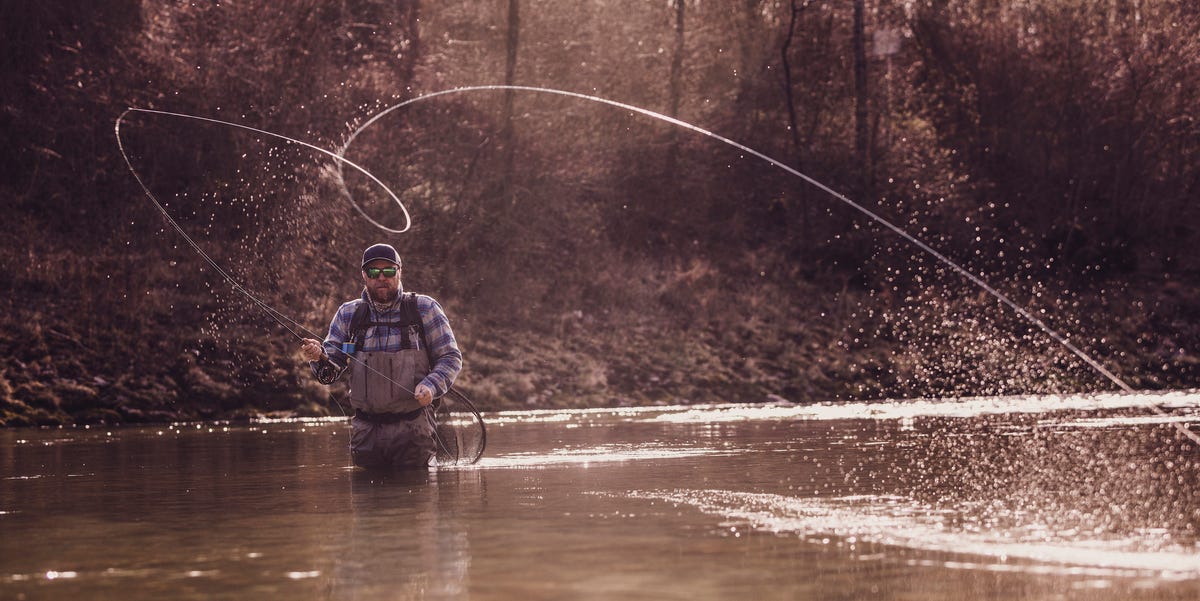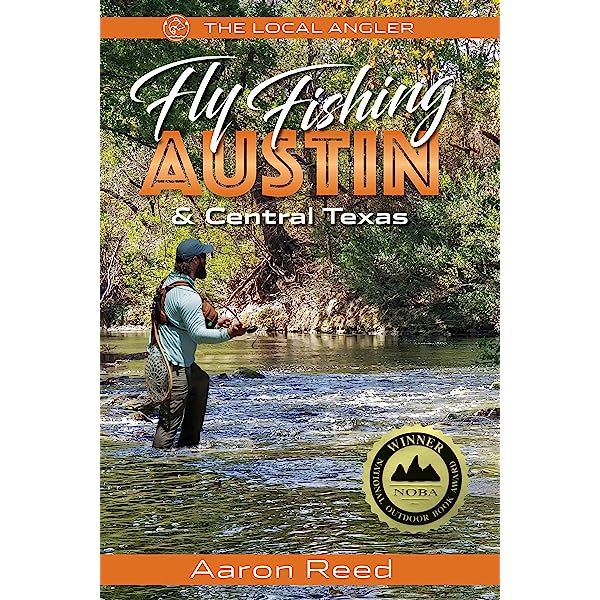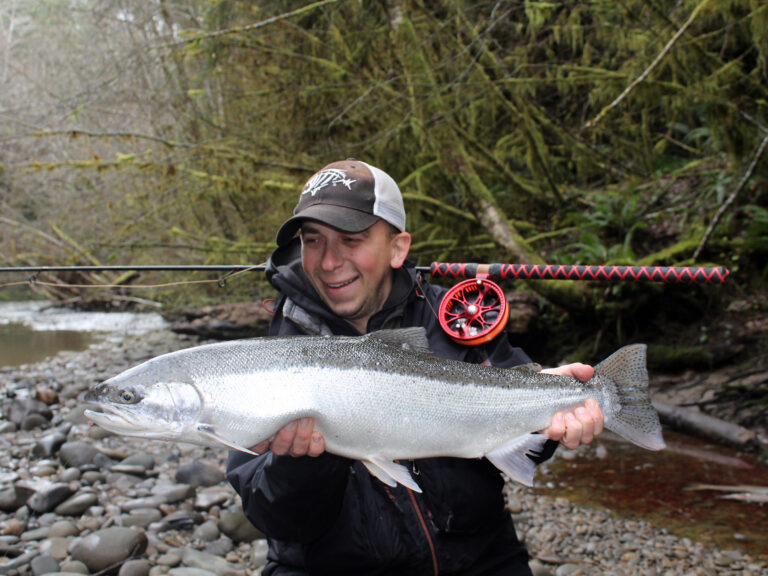To choose the right fly fishing rod, consider the length and weight of the rod based on the type of fish you are targeting and the type of water you will be fishing in. Fly fishing is a popular and enjoyable outdoor activity.
But choosing the right fly fishing rod can be a daunting task for beginners who are not familiar with the nuances of the sport. However, with the right knowledge and information, selecting the right rod for the job can be relatively easy.
The primary consideration when choosing a fly fishing rod is the length and weight of the rod. It is critical to choose a rod that matches the type of fish you are targeting and the type of water you will be fishing in. In this article, we will explore the different factors to consider when choosing a fly fishing rod to ensure you get the most out of your fishing experience.

Credit: www.popularmechanics.com
Understanding The Basics Of Choosing A Fly Fishing Rod
What Is A Fly Fishing Rod?
A fly fishing rod is an essential piece of equipment in fly fishing. It’s a long, flexible rod typically made of lightweight materials such as graphite or fiberglass and usually has a reel at the bottom. Its primary purpose is to cast the line and fly accurately and precisely during fly fishing.
The basic function of a fly fishing rod is to facilitate the fly’s presentation to the fish and then to effectively hook them when they bite it.
Why Is Choosing The Right Fly Fishing Rod Important?
Choosing the right fly fishing rod is a crucial step in your fly fishing experience. Investing your money into the right fly fishing rod will help you cast more accurately, fish longer without fatigue, and make your days on the water more enjoyable.
The right rod length, weight, and action will make a huge difference in the frequency and quality of your fish catches. Moreover, if you choose the right one, it can last you a lifetime.
Factors To Consider When Choosing A Fly Fishing Rod
When choosing the right fly fishing rod, several factors are essential to consider. Here are the key factors:
- Length: Choose the length based on where you will be fishing, the species you are targeting, and your style of fishing. For small streams and creeks, shorter rods are useful, while longer rods are better for larger rivers or lakes.
- Weight: Fly rods are designed with weights that range from 1 to 14. The weight of the rod you choose will depend on the type of fish species you’re going after. Having the right weight of the rod will help you cast further and with more precision.
- Action: Rod action affects the casting distance, accuracy, and the ‘feel’ when casting and retrieving. The action is classified as slow, medium, and fast. Slow action rods bend more, which makes them better for shorter casts and lighter lines. Fast-action rods are stiffer, allowing more extended casting with bigger flies and heavier lines.
- Material: Fly rods can be made from graphite, fiberglass, or bamboo. Graphite rods are the most popular and most versatile. Fiberglass is more durable and is used in smaller-weight rods. Bamboo is the most durable but can be very expensive.
Choosing the right fly fishing rod can be overwhelming, but understanding the basics of its features will help guide you in making the correct decision. Take your time, do your research, and make sure you invest in a quality rod that will provide you with enjoyment, success, and relaxation on the water.
Types Of Fly Fishing Rods To Choose From
Fly fishing is a thrilling and exciting outdoor activity. However, having the right equipment is crucial to ensure a successful fly fishing experience. One of the most important pieces of equipment in fly fishing is the fly fishing rod. With so many types of fly fishing rods available in the market, choosing the right one can be overwhelming.
In this guide, we will explore the different types of fly fishing rods available and help you choose the perfect one for your needs.
The Different Types Of Fly Fishing Rods
Here are the different types of fly fishing rods available:
- Single-handed fly fishing rods: These fly fishing rods are designed to be used with one hand, making them ideal for anglers who prefer a lightweight and versatile rod. They are suitable for small streams, lakes, and rivers. Single-handed fly fishing rods come in different lengths and weights to suit different fishing styles and locations.
- Double-handed fly fishing rods: Also known as spey rods, these fly fishing rods are longer and heavier than single-handed rods. They are designed to be used with both hands, making them ideal for anglers who want to cover more water and cast further. Double-handed fly fishing rods are suitable for salmon, steelhead, and larger rivers.
- Switch rods: These fly fishing rods are a combination of single and double-handed rods, making them suitable for both single-handed and double-handed casts. They are versatile and can be used in various fishing situations, making them ideal for anglers who want a single all-purpose fly fishing rod. Switch rods are available in different lengths and weights to suit different fishing styles and locations.
- Tenkara rods: These fly fishing rods are lightweight and simple in design, making them suitable for anglers who prefer minimalist equipment. They are traditional japanese fly fishing rods and do not require a reel. Tenkara rods are suitable for small streams and creeks.
Advantages And Disadvantages Of Each Type Of Fly Fishing Rod
Here are the advantages and disadvantages of each type of fly fishing rod:
- Single-handed fly fishing rods:
Advantages:
- Lightweight and easy to handle
- Versatile and suitable for different fishing styles and locations
- Easy to cast
Disadvantages:
- Not suitable for long casts
- Not suitable for larger rivers or heavy fish
- Double-handed fly fishing rods:
Advantages:
- Longer and heavier, allowing for longer casts
- Suitable for larger rivers and heavy fish
- Ideal for spey casts
Disadvantages:
- Heavier and more challenging to handle
- More expensive
- Not suitable for small streams and creeks
- Switch rods:
Advantages:
- Versatile and suitable for both single and double-handed casts
- Suitable for various fishing situations
- Available in different lengths and weights
Disadvantages:
- Not suitable for very long casts or heavy fish
- Tenkara rods:
Advantages:
- Lightweight and simple in design
- Suitable for small streams and creeks
- No reel required
Disadvantages:
- Limited to small streams and creeks
- Not suitable for larger fish or heavy water conditions
How To Choose The Right Type Of Fly Fishing Rod
To choose the right type of fly fishing rod for your needs, consider the following factors:
- Fishing location: Different types of fly fishing rods are suitable for different fishing locations. If you plan to fish in smaller streams and creeks, a tenkara rod or single-handed rod might be ideal. For larger rivers and heavy fish, a double-handed or switch rod might be more suitable.
- Fishing style: Consider your preferred fishing style when choosing a fly fishing rod. Single-handed rods are versatile and suitable for different fishing styles, while switch rods are ideal for anglers who want to use both single and double-handed casts.
- Experience level: Beginners might prefer a lightweight and easy-to-handle single-handed rod, while more experienced anglers might prefer a heavier and more challenging double-handed rod.
- Budget: Consider your budget when choosing a fly fishing rod. Single-handed rods are generally more affordable, while double-handed rods are more expensive.
By considering these factors, you can choose the perfect fly fishing rod to suit your needs.
Choosing the right fly fishing rod is crucial for a successful fly fishing experience. Consider your fishing location, style, experience level, and budget when choosing a fly fishing rod. Whether you prefer a lightweight single-handed rod or a heavy double-handed rod, there is a fly fishing rod available to suit your needs.
Happy fishing!
Conclusion
After reading this comprehensive guide on how to choose the right fly fishing rod, you should now have a better understanding of the factors that go into making this important decision. By considering the type of fish you’re targeting, the size of the water you’ll be fishing in, and your own personal preferences, you can select a rod that will provide an enjoyable and successful fly fishing experience.
Remember that there is no one-size-fits-all solution when it comes to choosing a fly fishing rod- it’s up to you to find the rod that meets your specific needs and preferences. With the right rod in hand, you’ll be ready to take on the water and enjoy all that fly fishing has to offer.
Happy fishing!






